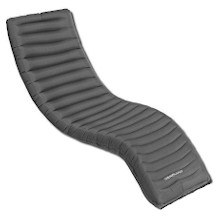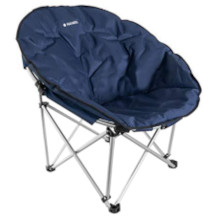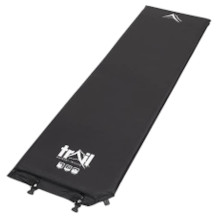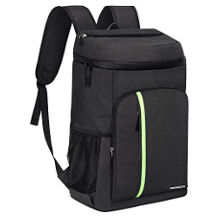Sleeping bag purchasing advice: how to choose the right product
- What You Need to Know
- A sleeping bag covers the body except for the head and face.
- There is a suitable sleeping bag for every weather condition.
- The comfort range describes the temperature at which users can sleep without freezing.
- Sleeping bags are lined with synthetic fibres or down.
Basic equipment for hiking enthusiasts
A sleeping bag exudes a sense of adventure. It is an indispensable part of your luggage on many trips and excursions. Whether hiking in the mountains, on a backpacking trip or at the next festival: the rollable sleeping accommodation is a practical companion and sometimes a saviour in an emergency. However, if the sleeping bag doesn’t meet certain requirements or if it was chosen incorrectly, it causes problems above all. Being deprived of sleep after a long hike is more than annoying.
When choosing the right sleeping bag, two aspects play a role: where and at what time of year it will be used, as well as personal needs. Is the sleeping bag needed for a festival in high summer or for an overnight stay at 1,000 metres altitude? Are rain and wet conditions to be expected? Do you get cold easily and want to snuggle in or is legroom more important to you? These and other questions will help you find the right sleeping bag.
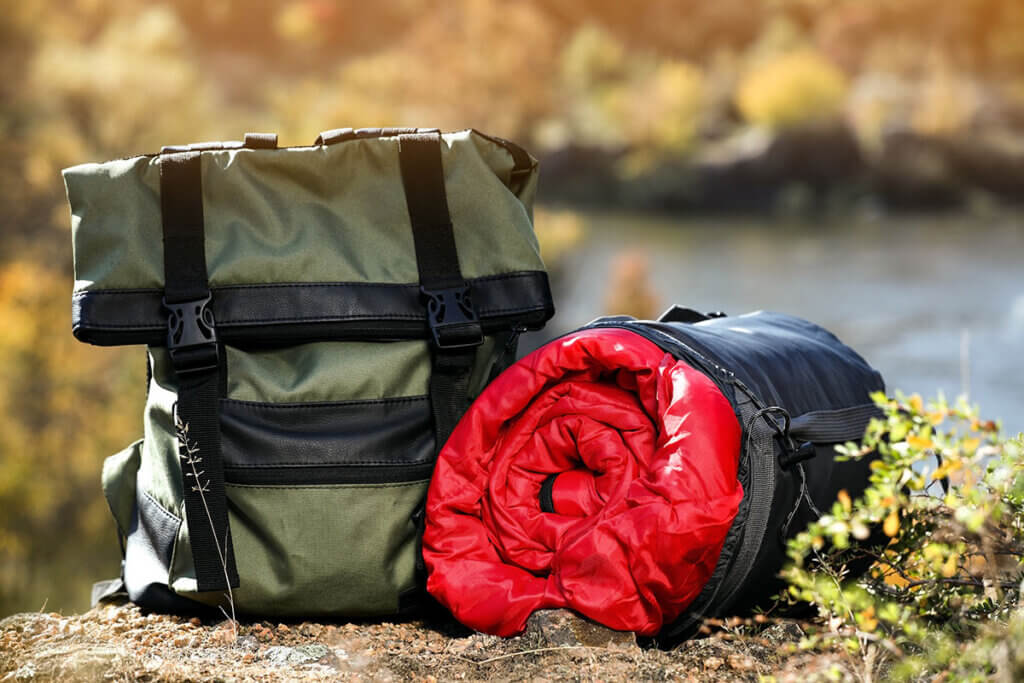
Legroom or well-packed: the different types
Above all, a sleeping bag must keep you warm. At very low temperatures, certain close-fitting sleeping bag types guarantee the best warmth. If you spend the night in the warm, you can allow yourself more legroom.
Blanket or box shape
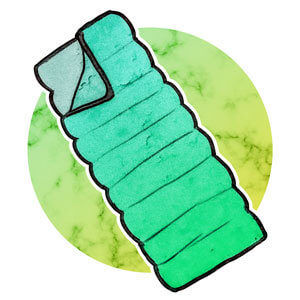
This rectangular sleeping bag is also called a youth hostel or hut sleeping bag. Its name comes from the fact that it used to be used as separate bedding on youth trips. This meant that you did not have to pay to hire bed linen in the youth hostel. The blanket sleeping bag therefore primarily serves hygienic purposes and is designed for overnight stays indoors. The lining is accordingly light.
By opening the long zip on the side, the sleeping bag becomes a blanket. On the one hand this is very practical, especially in high temperatures, but on the other hand heat is easily lost through the zip. Although the blanket sleeping bag offers a lot of space in the foot and leg area, it loses insulation performance. It is therefore not suitable for temperatures below freezing.
Due to its size, the blanket sleeping bag is heavier and less compact to store than smaller sleeping bags. Hikers should therefore opt for a smaller model – especially if they are sleeping outdoors. The blanket sleeping bag is better suited for overnight stays in hostels or for festivals in summer.
Mummy shape

The mummy or outdoor sleeping bag has a particularly good insulating performance thanks to its body-hugging cut with hood. Because it hugs the body tightly and becomes narrower towards the feet, it allows little freedom of movement. Turning over while sleeping is hardly possible. Due to its shape, the mummy sleeping bag has a small pack size and weight. This makes it ideal for anyone who wants to travel light.
Due to its very good thermal performance, the mummy sleeping bag is often used when spending the night outdoors. High-quality versions allow comfortable sleep even in severe frost.
Egg shape
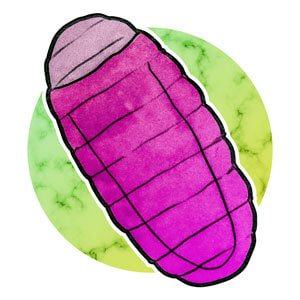
The Egg shape is a variant of the mummy shape and is cut wider in the chest and hip area. In the foot area, however, the egg-shaped sleeping bag is just as narrow, so that no warmth is lost in this sensitive area. This sleeping bag thus represents a compromise between sufficient freedom of movement and the best possible insulation. This suits restless sleepers, as it is possible to move and turn around in the sleeping bag.
Temperature range
The crucial question when buying a sleeping bag is how cold it will be in the place where it will be used. Do you sleep in a room, in a tent or outdoors? At what time of year do you want to spend the night in the sleeping bag? Basically, the colder the destination, the warmer a sleeping bag needs to be. Conversely, in warm places the sleeping bag can be lighter, thinner and more breathable. Keep in mind that temperatures can vary greatly depending on the time of day. Heat during the day does not necessarily mean a warm night.
Four categories for different temperatures
Based on their thermal properties, sleeping bags are usually divided into four categories:
Winter sleeping bags are designed for freezing nights and comfort temperatures between minus 5 and minus 18 degrees Celsius.
Summer sleeping bags are a good choice for warm nights with temperatures above 10 degrees Celsius.
3-season sleeping bags are considered all-rounders and cover the temperature range between winter and summer sleeping bags. As the name suggests, they are designed for three seasons: Spring, Summer and Autumn. They have a comfort temperature range between minus 4 and 9 degrees Celsius.
Expedition sleeping bags are something for extreme athletes. They keep you warm even at temperatures below minus 19 degrees Celsius.
Performance data
In addition to designating sleeping bags as summer or winter, manufacturers of sleeping bags specify temperature ranges to make the thermal insulation of the products comparable. These specifications according to European standard EN 13537 are based on a laboratory evaluation procedure. Two mannequins with heating elements, each representing a “standard woman” and a “standard man”, are placed in sleeping bags and brought to body temperature. The heat loss to the environment is measured.
The comfort temperature (TCom) is decisive for the purchase. In this temperature range, even an inexperienced user can sleep comfortably at any time. The specification refers to a 25-year-old, 60-kilogramme and 160-centimetre-tall standard woman. It should be noted that the lower limit of the comfort range is lower for men than for women. Basically, the perception of cold is individual. If you tend to freeze quickly, you should choose a sleeping bag with a low comfort temperature. A sleeping bag with a comfort temperature of minus 5 degrees Celsius, for example, will keep you comfortably warm at this outdoor temperature.
The lower limit range (Tlim) refers to a standard man of 25 years with a weight of 70 kilograms and a height of 173 centimetres. It describes the lower temperature value at which a normal man can just sleep without freezing.
The survival range (TExt) is practically not used by the average consumer. At these temperatures there is a risk of hypothermia. The survival range is only interesting for extreme athletes and can otherwise be ignored when making a purchase decision.
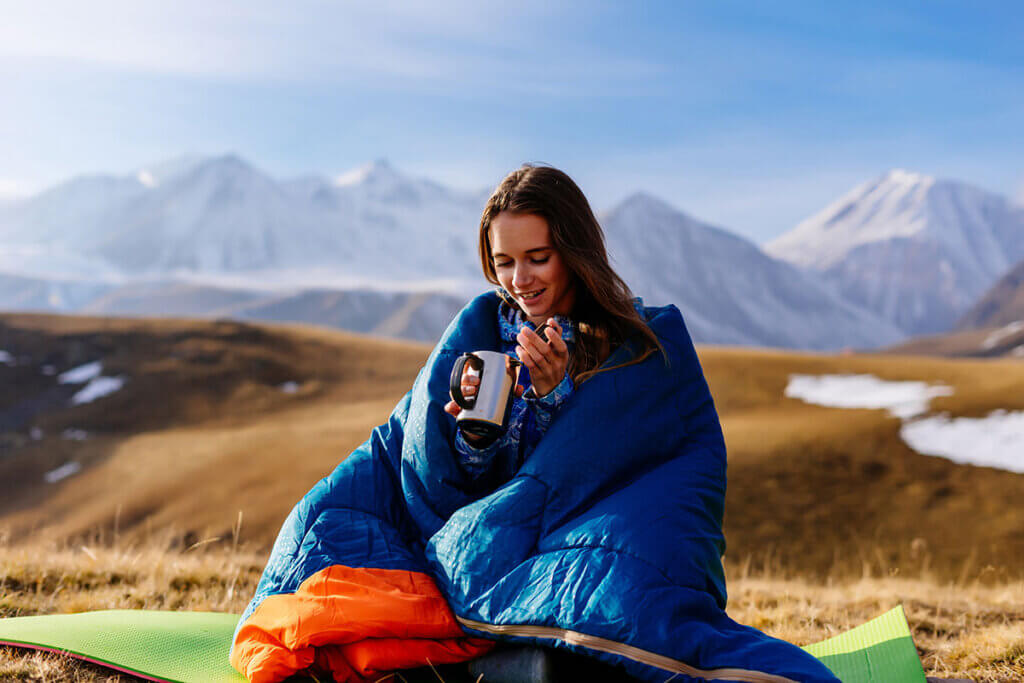
Filling materials
Once you have decided on the appropriate temperature range, the question arises as to which material you want to sleep in. Here you can choose between down and synthetic fibre sleeping bags. Factors such as size and weight or the humidity at your destination play a role in the decision.
Down filling
The down sleeping bag is the classic among sleeping bags. The filling is made from the breast down of geese or ducks and has natural insulating properties. The air cushion between the down prevents hypothermia in winter and protects against overheating in summer. A down sleeping bag weighs little, can be rolled up extremely compactly and is breathable. It offers high sleeping comfort, which is also reflected in the price. On average, such a sleeping bag is slightly more expensive than a synthetic fibre sleeping bag. However, with good care, a down sleeping bag is very durable.
Down sleeping bags are only suitable to a limited extent for humid regions or activities where they can get wet. Even high humidity can cause the down to clump together, which considerably impairs the insulating performance. The sleeping bag can be dried, but this may take a long time. Therefore, it is recommended to use it in dry regions.
If you don’t want to do without down, you should consider an impregnated, water-repellent down filling. The impregnation ensures that the down does not stick together when damp, so that the sleeping bag continues to keep warm. This treatment does, however, come at a price.
Down and animal welfare
The production of down can be associated with great animal suffering. When buying, look for certificates such as the Global Traceable Down Standard, the Responsible Down Standard and the Down Codex. Products labelled in this way come from production that is as ethically justifiable as possible. The down is taken from animals that are already dead and have been slaughtered for food production.
Synthetic fibre filling
In a synthetic fibre sleeping bag, several layers of tightly woven polyester fleece provide thermal insulation. The finer the fleece, the larger the air cushion and the better the thermal performance. The big advantage of the synthetic filling: it still warms even when it is damp. This is because the synthetic fibres – unlike down – do not stick together when damp. A soaked synthetic fibre sleeping bag also dries much faster than a down sleeping bag. The material is robust, hard-wearing and easy to clean. If you want to wash your sleeping bag often for hygienic reasons, you should choose a synthetic fibre sleeping bag.
Synthetic fibre has many practical features, but its weight and pack size are inferior to those of a down filling. A sleeping bag with synthetic fibre filling is not only less compressible for the same warmth, but also heavier than a down sleeping bag. If you have to carry the sleeping bag a long way, this can be the deciding factor in your purchase decision. Many users also prefer a down sleeping bag in terms of sleeping comfort, as the synthetic fleece is less breathable in comparison.
Other important buying criteria
The most important features of a sleeping bag are now clear. In addition, pay attention to the following aspects that are crucial for insulation performance and ease of use.
Sleeping bag size
When using a sleeping bag in a cool or cold environment, it is crucial that it is the right size. It should fit close to the body, but not so tight that it restricts movement. A sleeping bag that is too big will have empty areas to which heat is lost, posing a risk of hypothermia in low temperatures. This can be remedied by filling the hollow space with clothes, for example.
Before buying, you should check the length specification in centimetres. Sleeping bag sizes range from S to XL and are given in length. It is important that as little empty space as possible remains in the foot area. Otherwise you risk cold feet. For a body height of 175 centimetres, the sleeping bag length should be at least 190 centimetres, i.e. 15 centimetres more. For sleeping bags with a hood, you should add 30 centimetres.
Zip
The zip is a weak point of every sleeping bag, because heat can escape particularly easily here. Manufacturers counteract this problem with zip covers. This cover has a decisive influence on the quality of the sleeping bag. It covers the zip from the inside and prevents cold bridges from forming. Make sure that the entire length and width of the zip is covered.
The zip sits on the left or right side of the sleeping bag. For right-handed people, opening and closing the zipper is usually easiest when it is on the left side. For left-handed people it is the other way round, they reach a zip on the right side better.
Remember that even a zip with a cover remains a weak point in terms of insulation. For cold environments, a sleeping bag with a short zip is recommended. A blanket sleeping bag with a long zip is better for warm environments.
Equipment details
Sleeping bags designed for particularly low temperatures have a hood, as up to 30 percent of body heat is lost through the head. Look for a pre-shaped, adjustable hood that rotates with your head. It must fit snugly all over, but not pinch. An additional chamber along the drawstring protects cheeks and nose from cold air.
A thermal collar wraps around the neck and prevents warm air from escaping from inside the sleeping bag. It should definitely be present in a winter sleeping bag.
Couples on journeys are interested in sleeping bags that can be coupled. Such models can be joined together with the zips to form a double sleeping bag. The prerequisite is that the zip is on the right side of one sleeping bag and on the left side of the other.
Many sleeping bags have pockets, both inside and outside. These can be used to store valuables and useful items close to the body.
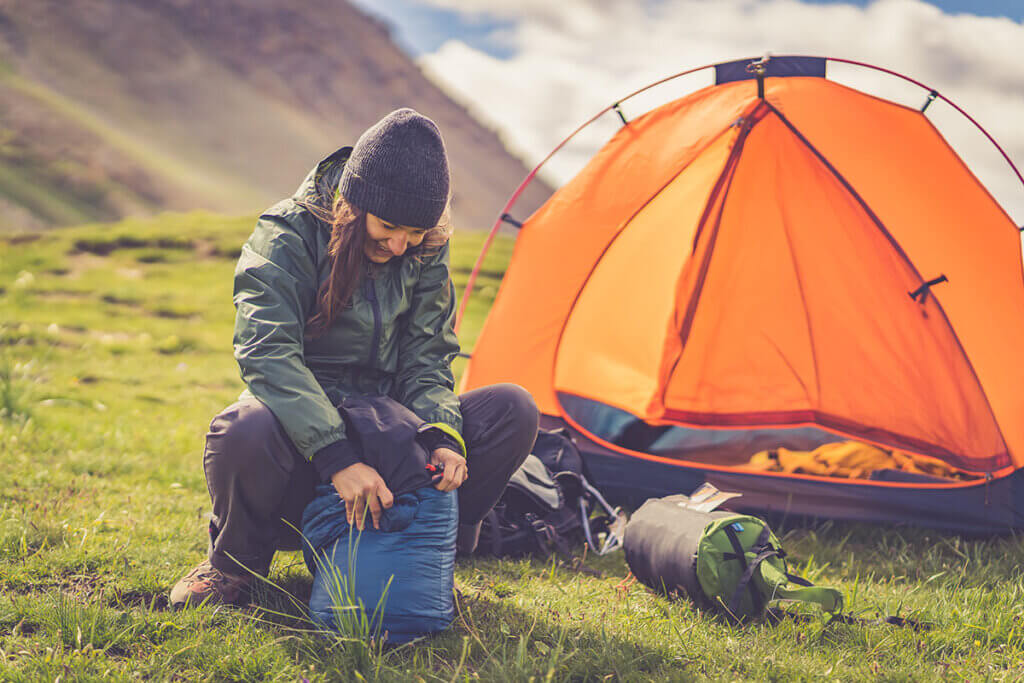
Hints for use
To ensure a long life, it is important to care for and store your sleeping bag properly. We tell you what to look out for and what is best to wear in your sleeping bag.
Cleaning and care
After every hike or camping trip, it is time to let the sleeping bag air out well. Turn it inside out and hang it on a clothesline. Washing in a washing machine is often not recommended, as seams and zips can be damaged during the wash cycle. Check the manufacturer’s instructions to see if the sleeping bag is machine-washable. Many synthetic fibre sleeping bags can be washed at 30 degrees Celsius on the gentle cycle. Alternatively, wash the sleeping bag by hand in the bathtub. Afterwards, it must be dried well so that it does not become musty.
Storage
A sleeping bag should not be stored tightly rolled up. In this state, the insulating material is compressed and loses its ability to inflate again in the long run. A sleeping bag therefore usually comes with two bags: a pack sack to take with you and a storage bag. A sleeping bag can be compressed to the dimensions of the larger storage bag without hesitation. The storage bag is much smaller and reduces the sleeping bag to the smallest possible size. As long as it is only temporarily stored in it, this does not harm the insulation of the sleeping bag.
What should be worn in the sleeping bag?
Especially when the sleeping bag is used in cold environments, it is recommended to get into the sleeping bag naked or dressed with functional underwear. The reason for this is that the body releases moisture as well as heat. If this is absorbed by the clothing, the wearer cools down significantly more. Many outdoor experts store their clothes in the footwell of the sleeping bag overnight so that they don’t have to put on ice-cold clothes in the morning.

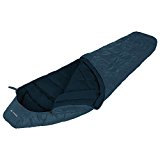
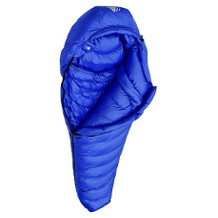
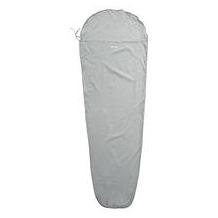
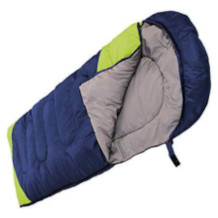
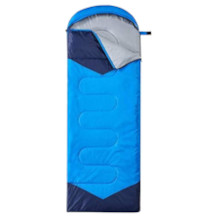
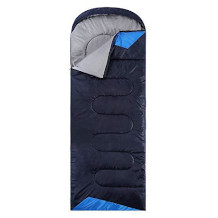
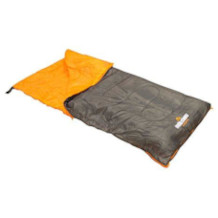
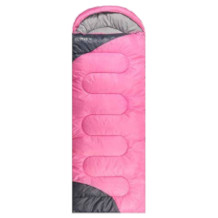
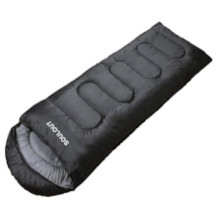
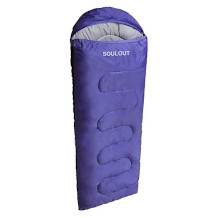
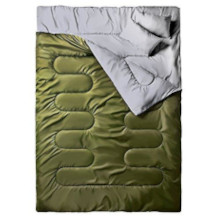


 10,285 reviews
10,285 reviews

